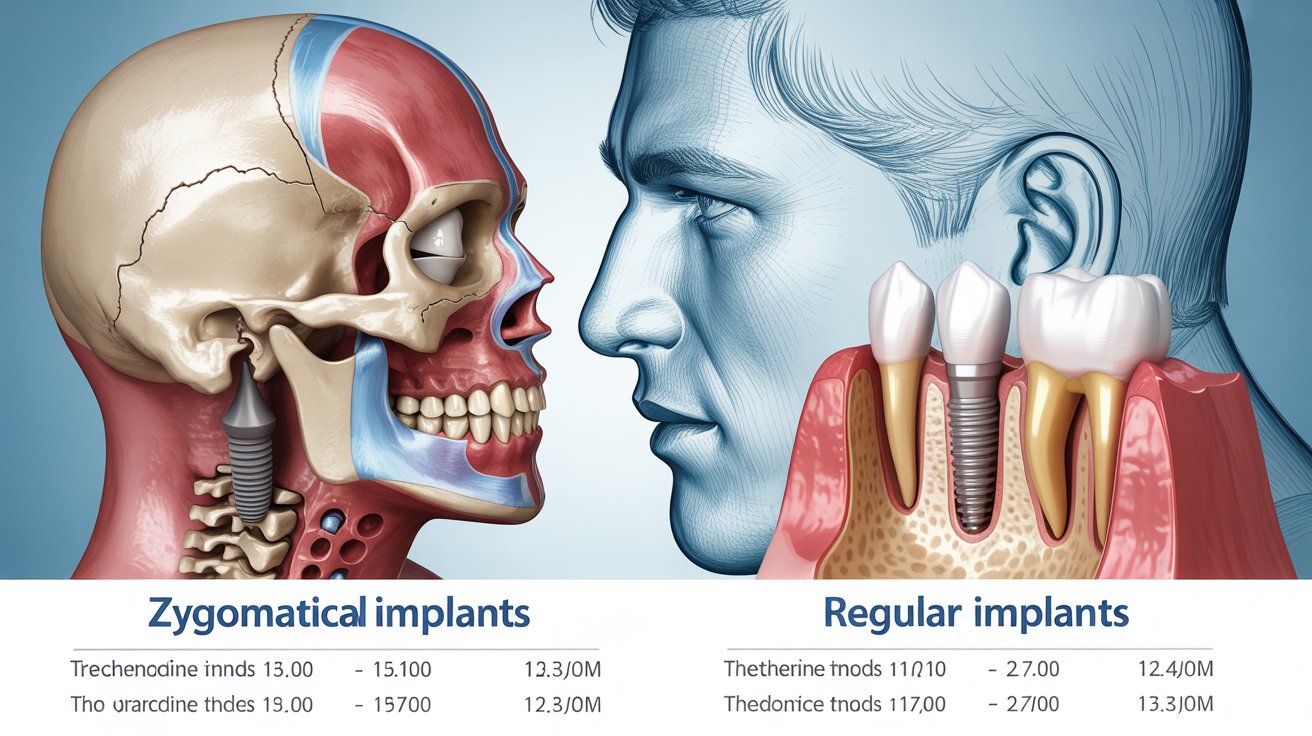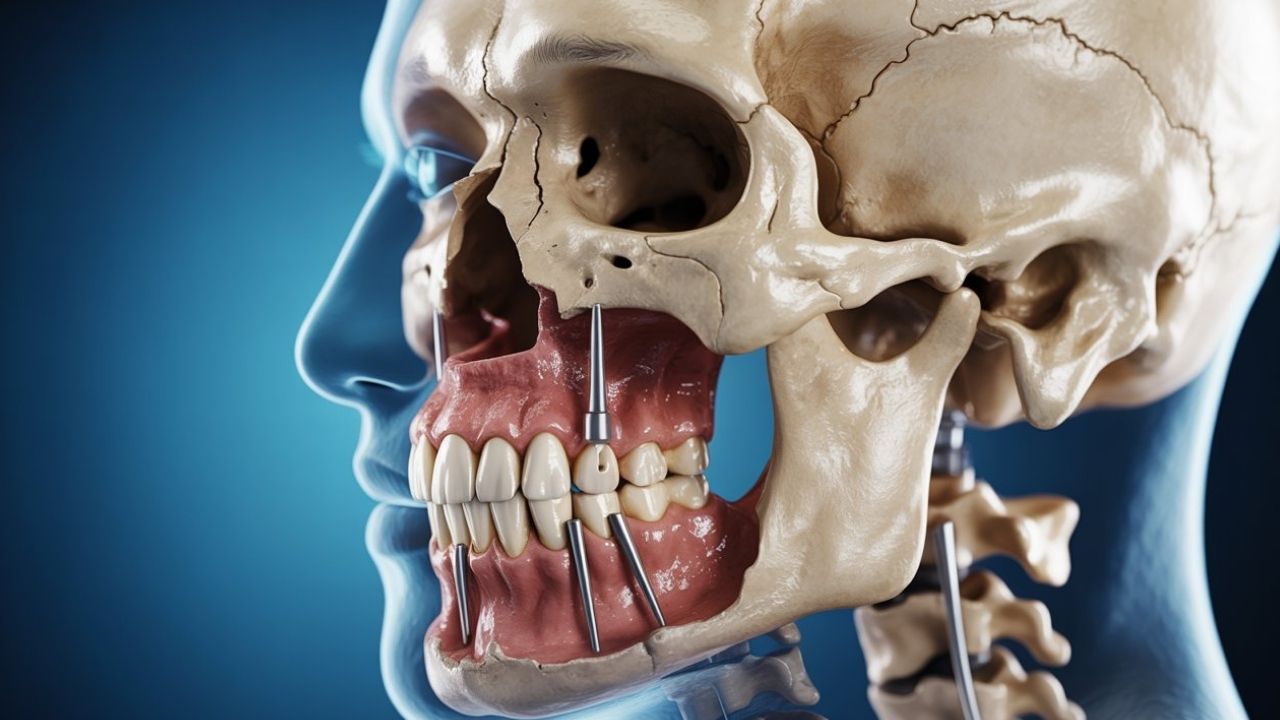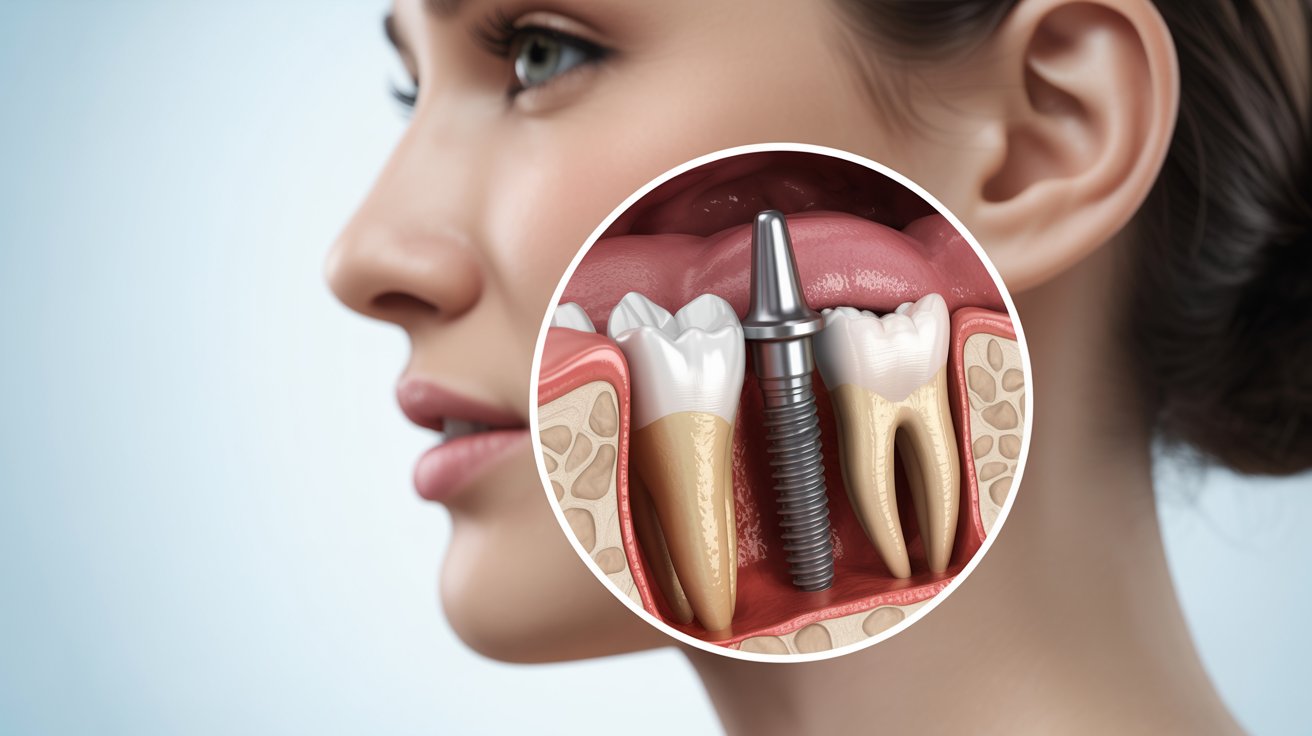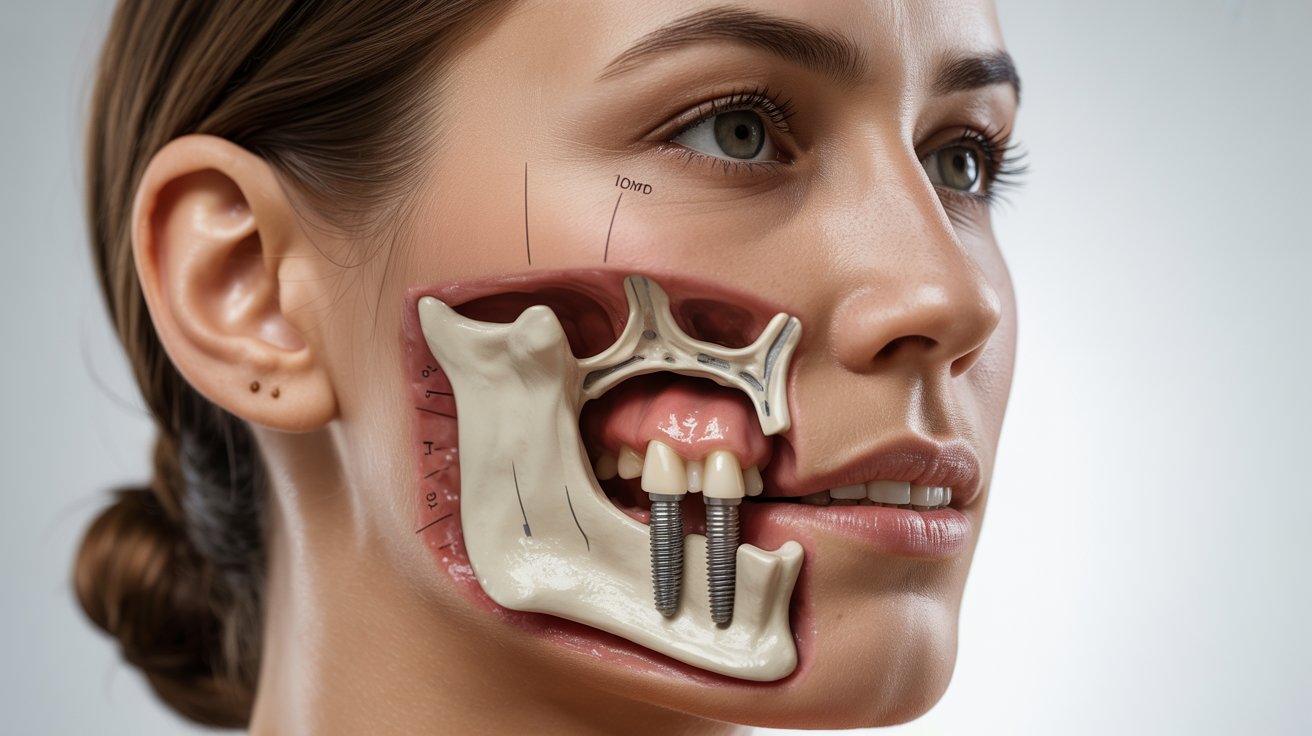If you have experienced Failed Dental Implants, you may feel discouraged, uncertain, or even afraid to try again. Implant failure can affect your confidence, your oral function, and your overall quality of life. The good news is that modern techniques—especially zygomatic implants—now offer a reliable second chance for patients who once believed they had no remaining options.
Dental implants are very reliable. Still, Failed Dental Implants can occur in some patients. When this happens, many people think they have no options left. Zygomatic implants change this picture and offer a real second chance.
What Are Failed Dental Implants?
Failed Dental Implants are implants that do not heal or stop working as expected. The bone does not fuse properly, or the implant becomes unstable over time. This can lead to discomfort, infection, or complete loss of the implant.
Failure can be early or late. Early failure appears soon after surgery. Late failure can appear years later, often due to infection or excessive stress. Understanding why Failed Dental Implants happen is the first step toward choosing the right solution, such as zygomatic implants.
Clinical Signs of Failed Dental Implants
The most common sign is mobility. A stable implant should feel like a natural tooth. If it moves, this may indicate a problem. Persistent pain, swelling, or bleeding around the implant are also warning signs. Bad taste or discharge can point to infection. These issues should never be ignored. In advanced cases of Failed Dental Implants, chewing becomes difficult. The gum may recede, and the prosthesis may feel loose or unstable.
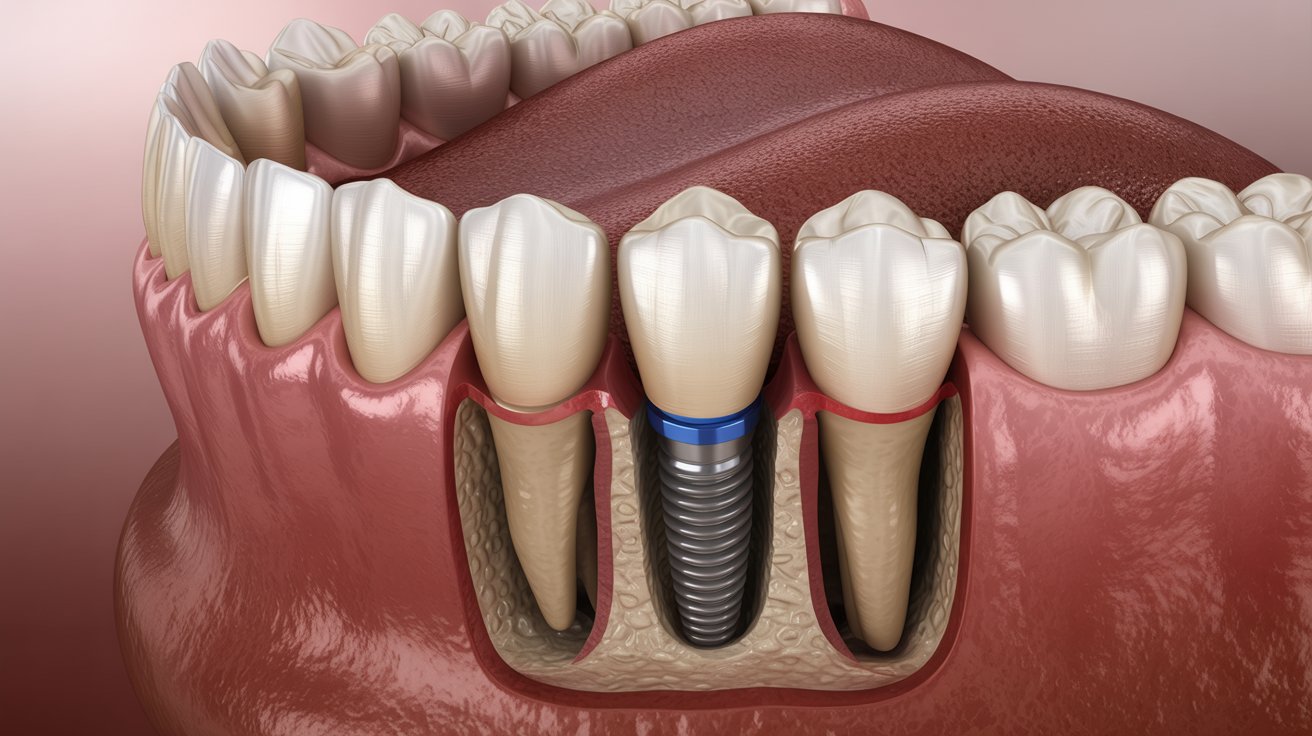
Main Causes of Failed Dental Implants
Failed Dental Implants are usually the result of a combination of factors. Bone quality, surgical technique, and oral hygiene all play a role. Some risks can be reduced; others must be managed carefully. Proper planning and 3D imaging are crucial. They help the surgeon evaluate bone volume and anatomy. They also reduce the risk of incorrect positioning. Despite careful planning, some implants still fail. In such cases, zygomatic implants can be considered as a strategic alternative.
Bone Loss and Poor Bone Quality
Severe bone loss is a major reason for Failed Dental Implants. Long-term tooth loss, gum disease, or previous infections weaken the jawbone. The bone becomes too thin to hold a standard implant safely. In the upper jaw, bone loss is often combined with sinus expansion. This reduces vertical bone height even more. Conventional implants may not achieve enough stability in these situations. When this happens, repeated implant attempts carry high risk. Zygomatic implants bypass the damaged bone and anchor in the cheekbone instead.
Infection and Peri-Implantitis
Peri-implantitis is a key cause of Failed Dental Implants. It is an infection of the tissues around the implant. Bacteria destroy bone and soft tissue, and the implant gradually loosens. Poor oral hygiene, smoking, and uncontrolled diabetes increase this risk. In some cases, cement residues or poorly fitting crowns trap plaque and promote infection. Regular professional cleaning is important.
Once advanced peri-implantitis develops, the implant often must be removed. After proper healing and infection control, zygomatic implants can be planned if bone loss is severe.
Mechanical Overload and Bruxism
Excessive bite force is another reason for Failed Dental Implants. Grinding and clenching, known as bruxism, overload the implant. Micro-movements at the bone–implant interface prevent stable healing.
Poorly distributed occlusion can also overload specific implants. This is common when full-arch bridges are not well balanced. Metal framework design and implant position are very important here.
Night guards and careful prosthetic planning help protect the implants. These measures are also important after placement of zygomatic implants.

How Zygomatic Implants Help After Failed Dental Implants
Zygomatic implants are longer implants placed in the zygomatic bone, or cheekbone. This bone is dense and offers strong support. It allows stable anchorage even when the upper jaw has severe bone loss or multiple Failed Dental Implants. They are mainly used for full-arch rehabilitation of the upper jaw. In many cases, they remove the need for sinus lifts and large bone grafts. This shortens the treatment time. For patients who were told that implants are impossible, zygomatic implants can be life-changing. They restore function, comfort, and smile aesthetics.
Bypassing Severe Maxillary Bone Loss
After extractions and Failed Dental Implants, the upper jaw often becomes thin and fragile. Conventional implants cannot gain enough stability in such bone. Sinus grafting is not always successful or acceptable for the patient. Zygomatic implants bypass this problem by anchoring in the cheekbone. The zygomatic bone is naturally dense and resorbs much less over time. It offers strong long-term support.
Immediate Function and Fewer Surgeries
Many zygomatic implant protocols allow immediate loading. This means that a fixed bridge is attached soon after surgery. The patient does not stay long without teeth. Because bone grafts are usually not needed, there are fewer surgical stages. This reduces total treatment time and overall healing stress. It can also lower the chance of further complications.
For patients who already experienced Failed Dental Implants, fewer surgeries and faster results are a major advantage.
High Success Rates in Complex Cases
Clinical studies report high survival rates for zygomatic implants. They remain stable for many years, even in cases with extreme bone loss. This offers a predictable solution after one or more Failed Dental Implants. Success depends on proper planning, experienced surgeons, and strict hygiene. Follow-up visits are also essential. Any sign of inflammation should be treated early. When all these factors are respected, zygomatic implants can provide long-term function and aesthetics comparable to or better than conventional implants.
 Who Is a Candidate for Zygomatic Implants After Failure?
Who Is a Candidate for Zygomatic Implants After Failure?
Not every patient with Failed Dental Implants needs zygomatic implants. They are mainly used in advanced cases. A detailed 3D scan helps the team evaluate bone quality, sinus anatomy, and soft-tissue conditions. Good candidates usually have severe maxillary bone loss, unstable dentures, or repeated implant failures. They also want fixed teeth rather than removable prostheses. Overall health must allow for general or local anesthesia. A full clinical and radiographic assessment is required. This allows the surgeon to discuss risks, benefits, and alternative options in detail.
Situations Where Zygomatic Implants Are Preferred
Zygomatic implants are often preferred in patients with multiple Failed Dental Implants in the upper jaw. They are also ideal when sinus grafts have failed or are not desired. Patients with advanced atrophy of the maxilla are typical candidates.
They are particularly useful for full-arch, fixed solutions. Patients who cannot tolerate removable dentures often benefit greatly. They regain chewing efficiency and confidence. For medically suitable patients, this technique can compress years of staged grafting into a single, definitive solution.
Why Choose Prof. Dr. Celal Çandırlı for Zygomatic Implants Surgery?
Choosing the right surgeon is critical for complex procedures like zygomatic implants. Celal Çandırlı is widely recognized for his deep experience in advanced maxillofacial surgery, especially in cases involving severe bone loss. His practice focuses on challenging full-arch reconstructions, which makes him a trusted choice for patients who have experienced implant failures or have been told they are “not suitable for implants.”
He is known for his meticulous treatment planning, including 3D imaging, careful anatomical evaluation, and personalized surgical approaches. These steps are essential in zygomatic implants, where precision directly affects long-term stability and comfort. Patients often prefer surgeons who consistently apply evidence-based methods and modern surgical protocols, and Çandırlı’s approach reflects these standards.
Another reason patients choose him is his emphasis on predictable outcomes and patient communication. Complex implant cases require clear guidance before, during, and after treatment. His focus on transparency, careful follow-up, and individualized care helps patients feel confident throughout the entire process.
Frequently Asked Questions | Failed Dental Implants and Zygomatic Implants
Failed Dental Implants can be frustrating and emotionally draining. However, they do not mean the end of implant-based treatment. With modern techniques, many complex cases can still be rehabilitated. Zygomatic implants offer a strong, graft-free alternative in severe bone-loss situations. They provide stable support for fixed teeth and excellent long-term results. For the right patient, they truly represent a second chance. If you have experienced implant failure, consult a team experienced in zygomatic implants and advanced 3D planning. A personalized evaluation will show whether this life-changing option is suitable for you.
What happens when zygomatic implants fail?
Zygomatic implant failure is rare, but it can still occur in complex cases. When it fails, patients may feel pain, swelling, or loosening of the prosthesis. In most situations, surgeons replace the failed implant with a new one or plan an alternative full-arch solution after healing.
What is the success rate of zygomatic implants?
Zygomatic implants have a very high success rate, often reported between 95% and 98%. Their stability comes from anchoring into the dense zygomatic bone. With proper planning and hygiene, they can remain functional for many years without complications.
What is the 3/2 rule for dental implants?
The 3/2 rule guides implant positioning in areas with limited bone. It states that a 3 mm implant can be placed safely if at least 2 mm of bone surrounds it. This rule helps clinicians avoid structural stress and reduce the risk of implant complications.
What are the cons of zygomatic implants?
The main disadvantage is the complexity of the surgical procedure. It requires advanced training and significant experience. Additionally, postoperative swelling may be higher than standard implants, and prosthetic design must be very precise.
What is the biggest reason dental implants fail?
The most common cause of implant failure is infection, specifically peri-implantitis. Bone loss, smoking, poor oral hygiene, and uncontrolled medical conditions also increase the risk. Early detection and proper care help reduce long-term complications.
How long do zygomatic implants last?
Zygomatic implants can last decades when properly maintained. Their long-term survival rate is comparable to or even higher than regular implants. Regular check-ups, good hygiene, and well-balanced prosthetics help extend their lifespan.
Are zygomatic implants better than regular implants?
Zygomatic implants are not necessarily “better” but are superior for specific cases. They are ideal for patients with severe upper-jaw bone loss. In situations where traditional implants fail or bone grafts are not possible, zygomatic implants offer a reliable alternative.
What is the dark side of dental implants?
The dark side refers to potential complications such as infection, nerve damage, and implant failure. Some patients also face long healing periods or require multiple surgeries. Proper planning and experienced surgeons help minimize these risks.
What are the contraindications for zygomatic implants?
Contraindications include uncontrolled systemic diseases, active sinus infections, and poor bone quality in the zygomatic area. Patients with severe immune disorders may also not be suitable. A detailed 3D scan and medical evaluation are required before treatment.

